In the fast-paced digital advertising landscape, timing is critical. Dayparting strategies, also known as ad scheduling, enable advertisers to optimize their ad budgets and target certain audiences when they are most active.
In this article, we’ll dive into the concept of dayparting. Everything from what it is, how it works, and how you can leverage it to optimize your programmatic advertising efforts is down below.

What is dayparting?
Simply put, dayparting is a strategy that allows marketers to display their ads during specific times of the day when their audience is most likely to engage. This straightforward yet effective approach helps optimize ad spend and dramatically improve campaign performance.
When you launch an ad campaign on the advertising platform, you have two possible scenarios to follow: distribute ad serving evenly during the period or show ads only during particular days/hours. Setting the time of parting on DSP is very easy; however, it is important to understand which days of the week or hours of the day can influence your campaign so that it generates the maximum profit.
How does it work and how to set it on DSP?
We already know what dayparting is, so let’s try to define parting on DSP. Dayparting on DSP determines the time when the campaign is active. It defines the bid timing: when your DSP bids on impressions (days and hours). How to set it up on DSP?
Step # 1
SmartyAds DSP guide instructs advertisers on creating an ad campaign — after you’ve chosen an ad format, you can fill in the basic ad campaign setting. Using the ‘Time’ tab (see the screen below), you can schedule your ad serving accordingly.
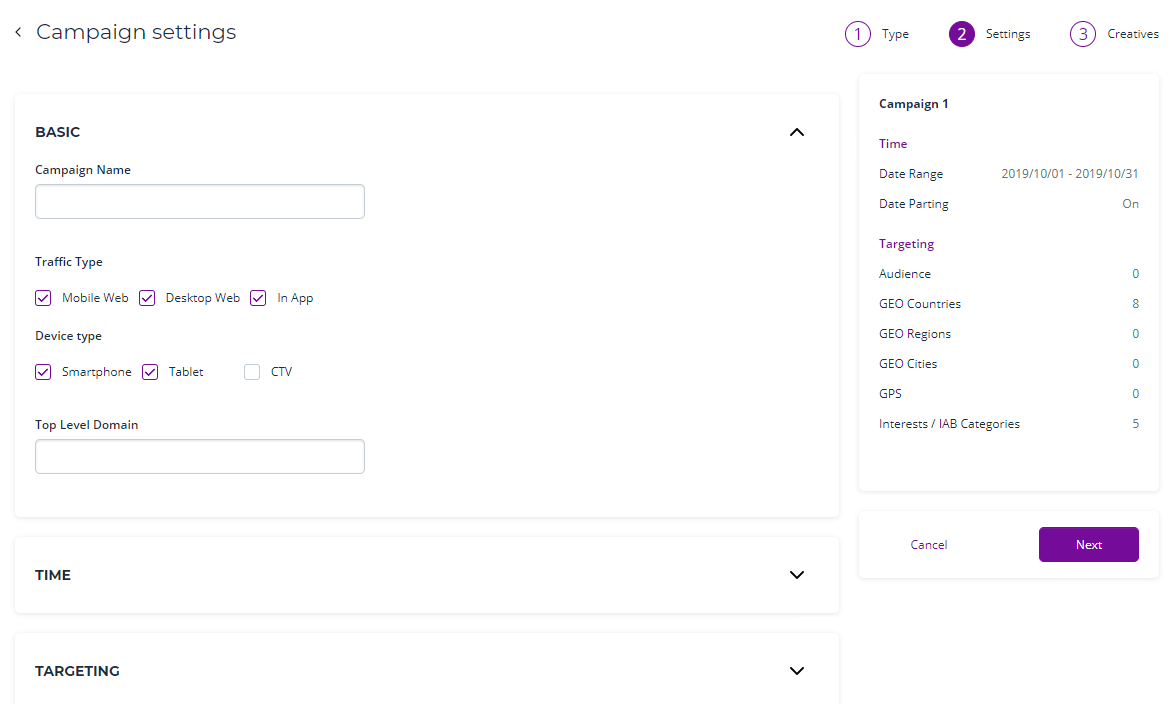
Step # 2
Open the tab ‘Time’, and then you will be able to select suitable ad show hours and days. In the same tab, you can also configure when your campaign starts and ends, then you should also select the timezone you advertise in.
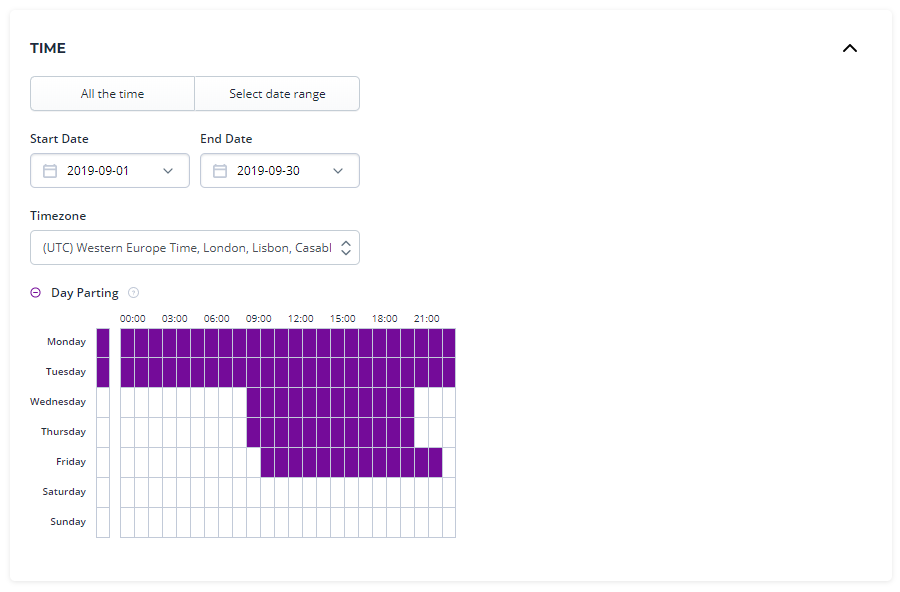
Time of parting: key factors it depends on
The dayparting strategy is a very individual thing that may depend on your business, its working hours, the country you advertise in, and the online habits of your target audience.
For instance, if your business can process orders only during business hours, excluding the weekends, it makes sense to sync your campaign with your business's operating schedule. This way, you won’t lose customers, and your ad budgets won’t be spent in vain.
Here's another reason why it is so important: if your target audience is active during the day and your campaign runs at night, you will never get the best results; that’s why it’s also important to choose targeting solutions that take into account the timezone.

Dayparting strategies
The daypart times may vary not only from industry to industry but also from brand to brand (especially if products or services have different specifics). The best practice will be to conduct a little survey of your brand and run A/B testing. Here is what you can do to use dayparting effectively:
Define when your audience is most active
Use this information as a starting point. You can use data from your CRM to analyze the peak hours when people make calls and use Google Analytics to analyze when people make purchases most often.
In Google Analytics, you can also search for predefined reports.
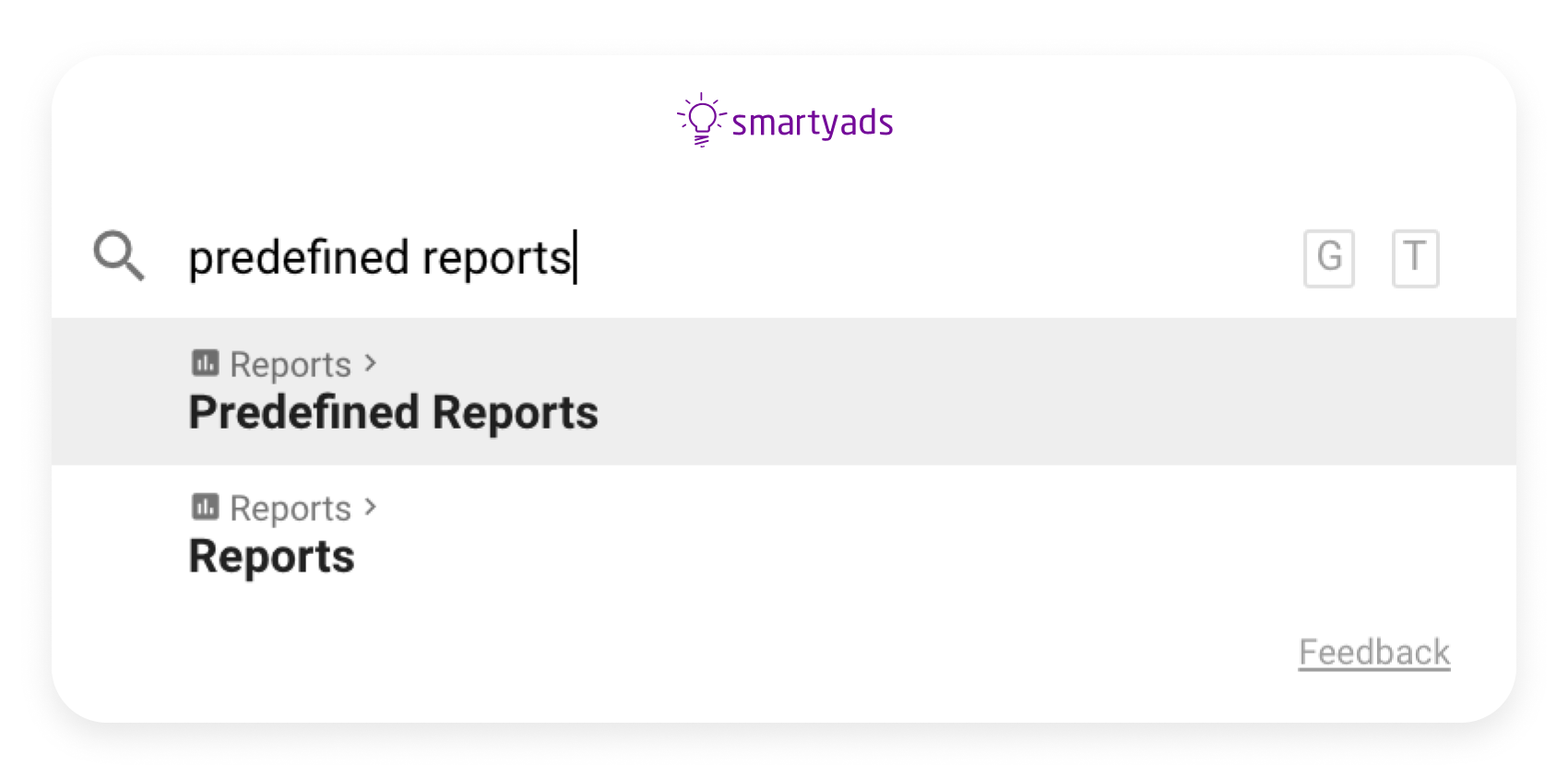
Scroll down until you see the stats that uncover where your users are the most active. Here you can also find a report regarding ‘How your active users are trending over time’.
If you also run ads on Facebook and Instagram, their internal stats will help you find a time when your audience is most active.
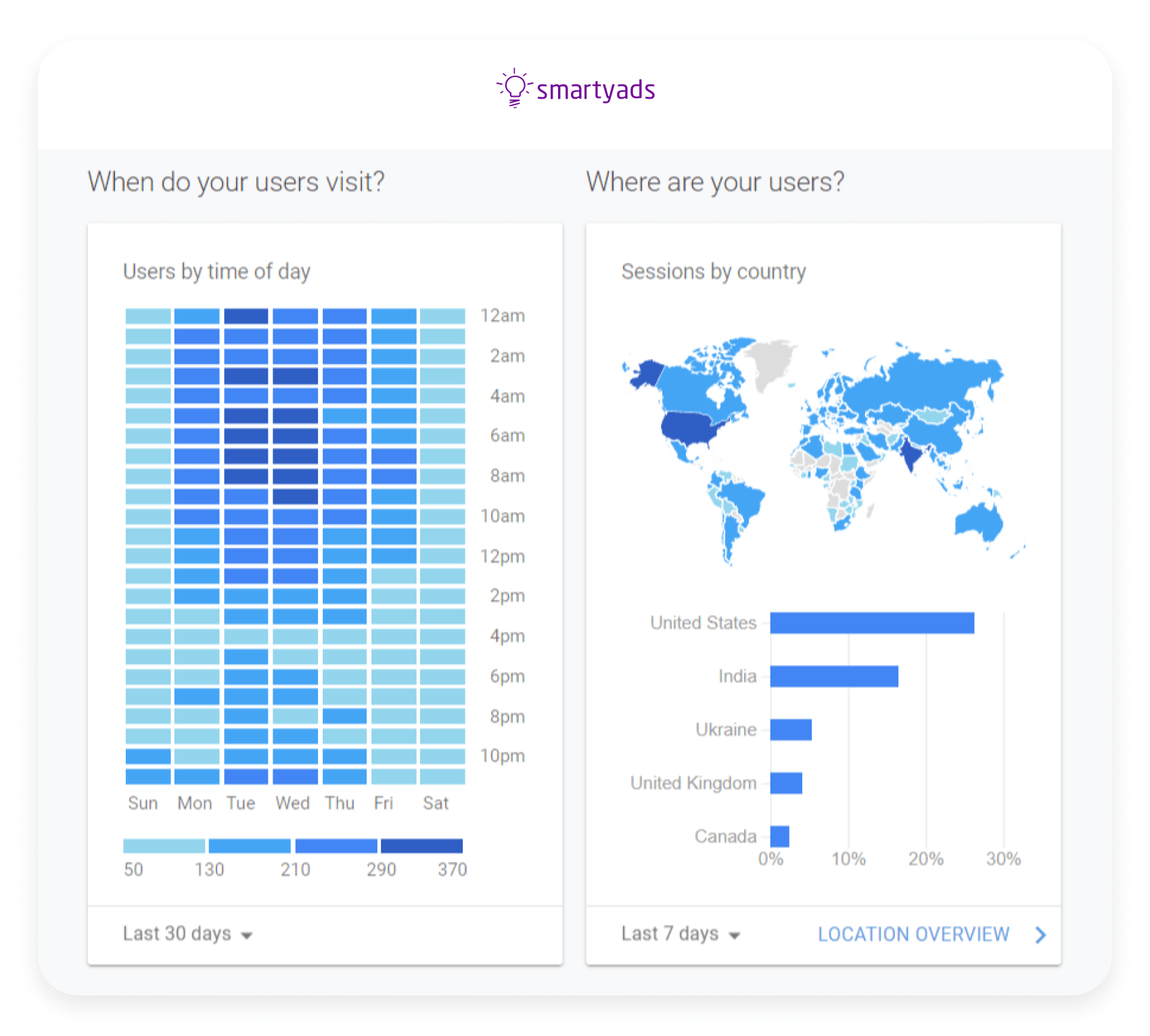
Take into account segments of your audience
Fitting your ad schedule according to the stats in GA is a sure way to get the right timing for dayparting. If you don’t have a Google Analytics account yet, here are the core criteria that you should keep in mind in order to adjust campaigns for different audience segments.
- Region. Do not forget about local time. In one region, people may already go to bed, while in another, they may already go to work. Always select the timezone correctly on your DSP.
- Daily routines. Middle-aged audiences mostly have a standard daily schedule; they tend to get up in the morning, spend the day at work, and go to bed before midnight; younger people (students), however, are more active during the night.
- The category of the product or service. Different products can be bought by people of different ages. Still, for example, meds against back pain may be more popular among senior people and office workers. They likely flip through the websites at work: in the morning, at lunch, before going home.
Arrange ads spend correctly
We recommend setting the budget limits on DSP.
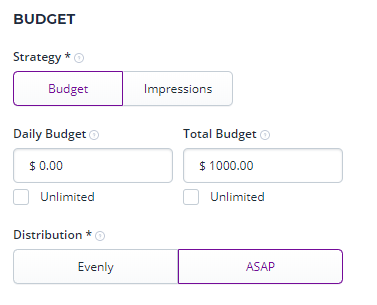
For instance, if you work with SmartyAds DSP and you want to actively advertise something like a discount or an upcoming event, and you have little time left, choose the ASAP option. It means the platform will show your ad as many times as possible during the campaign period. If your offer is not very time-dependent, you can distribute your budget more evenly (choosing the option ‘evenly’ in the campaign settings).
Use an existing audience for retargeting
Set the retargeting campaign if you have launched DSP campaigns before. In this case, you can select an existing audience in your DSP. This audience will be “warmer”, which means people will be more likely to convert. If you have a website, you can set up the pixel, which provides you with an additional opportunity to track how users interact with your creatives. On SmartyAds DSP, you can set up tracking with Pixel, Image, and Postback URL.
![]()
Benefits of dayparting
Dayparting offers a wide range of advantages that can significantly improve the effectiveness of your advertising campaigns. Here are the top benefits of incorporating this ad scheduling approach:
Better audience engagement
Dayparting enables advertisers to align their campaigns with the peaks of shopping or browsing time of their preferred audience, which boosts engagement.
Higher conversion rates
Usually, this strategy helps to target audiences who are engaged and are most likely to take action.
Enhanced ad relevance
Some ads can be relevant for one part of the day rather than another one, making the ads more interesting to your target audience.
Cost efficiency
Avoiding less impactful times of the day with dayparting can also help you avoid ad spend waste and improve your ROI.
Competitive advantage
Your competitors might overlook the optimal time to launch an ad campaign so you can gain a significant competitive advantage.
Strategy flexibility
Feel free to experiment with different time slots to identify what works best for a specific campaign and optimize it for the peak performance period.
Challenges of dayparting
While dayparting offers significant benefits, it also comes with its own set of challenges that advertisers need to navigate. Understanding them is essential to effectively implementing dayparting:
Requires testing
You should test your ad campaigns continuously before you know what time of the day works best. However, it will pay off once you gather all the data.
Time zone complexity
If you are a global business, managing campaigns across multiple regions or countries can be tricky. Different time zones can complicate scheduling.
Dynamic audience behavior
Audience behavior tends to change from time to time. Therefore, it’s important to revise their activity from time to time to adjust your dayparting accordingly.
Technical setup
On some platforms, implementing and managing ad scheduling can be a bit complicated from a technical perspective. Some tech knowledge may come in handy. By choosing a trusted partner like SmartyAds, you can leverage this useful feature without overwhelming yourself with tech stuff.
What daypart times work best?
More and more marketers use dayparting in their media campaigns, which has a dramatic impact on businesses that operate in areas influenced by seasons, market fluctuations, spikes in search results, and clicks and impressions. If the demand in your industry is relatively flat, the results from correctly applied dayparting time will be more humble.
The eCommerce businesses, for instance, may advertise more intensively during the holiday season, targeting people during the hours they are off work. Also, retailers can use the DSP retargeting feature to advertise to the people who visited their stores but didn’t convert.
Dayparting may come in handy when you apply geofencing or geotargeting campaigns as well. For example, there’s a big trade show that takes place at a certain venue during particular hours. Using the geo-targeting function, you channel the ads to the mobile phones of the users who are staying nearby. The dayparting, in turn, will help you to address them during the hours when this trade show is open.
To sum up
Advertisers spend a lot of time trying to optimize their campaigns and making every effort to squeeze everything out of it. Just the right selection day and an hour can propel a campaign forward, as you will be showing the ads to the users when they are most susceptible to it. This turns dayparting into one of the most popular optimization methods that advertisers can use.
Tools like SmartyAds’ DSP make it easier than ever to execute effective ad scheduling strategies. Ready to boost your campaign results? With over a decade of expertise and numerous industry awards, SmartyAds is your reliable partner in programmatic success.
Navigate and schedule your campaigns with the power of automation on SmartyAds DSP!

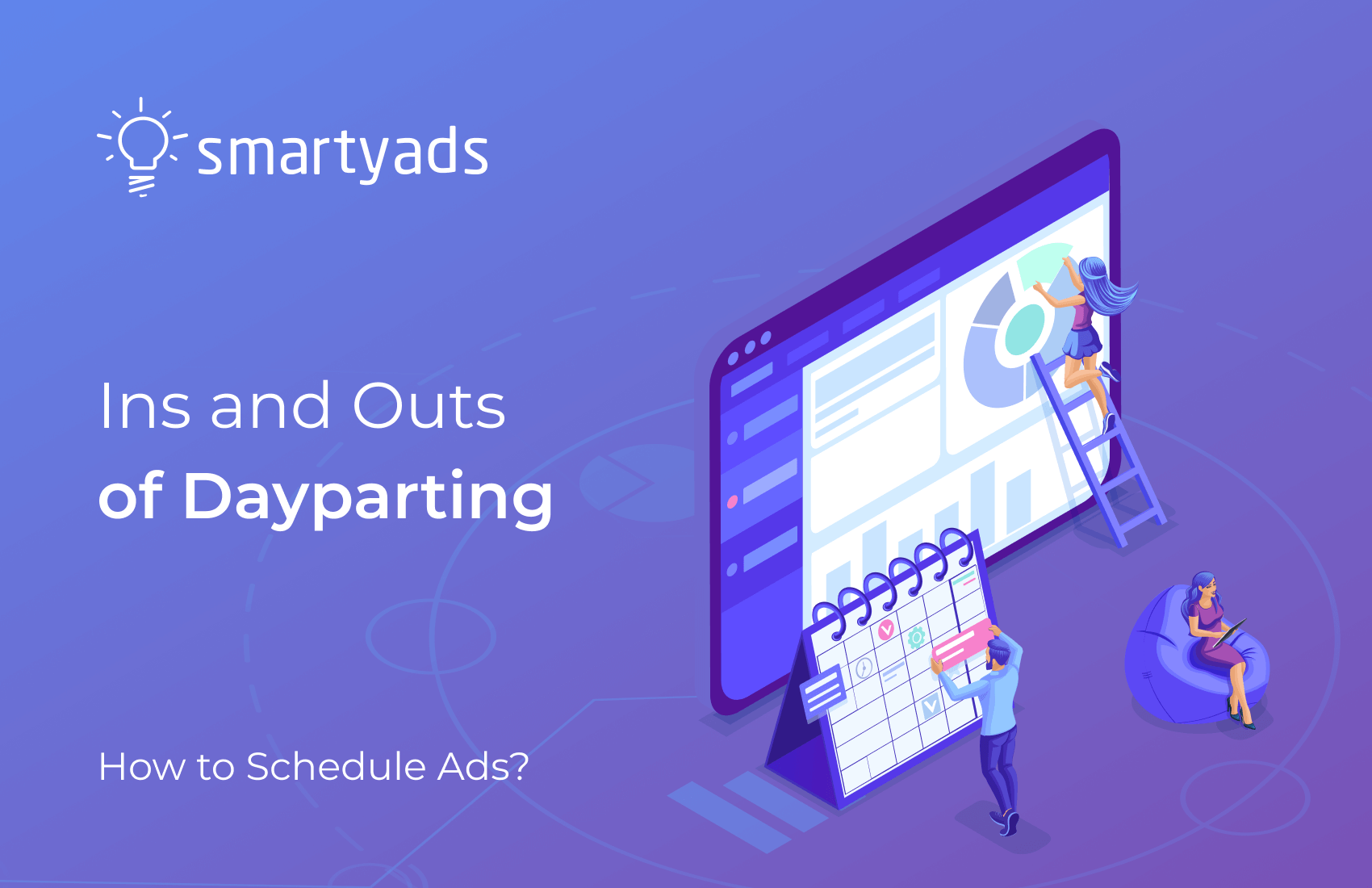
.webp)


